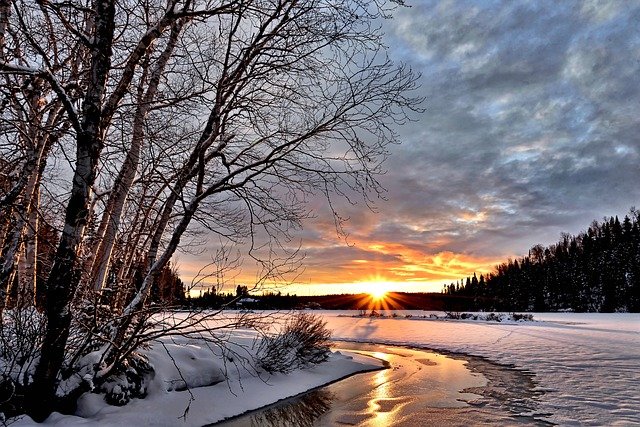The Wages Of Winter: 4 Ways Cold Weather Can Damage Your Home
Image by Alain Audet from Pixabay
Winter weather can be hard on your home, causing damage related to freezing temperatures and all sorts of other unpleasant conditions. But while there’s nothing you can do to stop those storms, there are plenty of steps you can take to minimize the consequences. By making these 4 protective improvements to your property, though, you can take preemptive steps to minimize the wear and tear, no matter how harsh the winter months are.
Upgrade Your Insulation
Quality insulation is indispensable during cold weather, if only because it will keep your heating bills to the bear minimum, but you may not want to tear out your walls to keep things warm. Luckily, there are a variety of other ways to keep the cold out and the heat in, such as by applying weatherstripping and hanging insulated curtains. You’ll also want to watch out for any gaps around your doors or windows – old homes are particularly prone to drafts in these areas – and even around your outlets.
Watch Out For Water Damage
Storms can cause all kinds of roof damage, but you may not realize that your roof can take a beating from much more passive forces, such as the build-up of ice during cold weather. Known as an ice dam, this problem lives up to its name; essentially, a large amount of ice forces its way between the roof and main building. This process can cause leaks and interior water damage, in addition to loosening roof shingles and even pulling off your gutters. Luckily, cleaning your gutters before the snow starts can go a long way towards preventing ice dam development.
Trim Your Trees
In most cases, homeowners insurance is your best friend when it comes to property damage, but it’s important to consult your homeowners insurance provider when dealing with weather-related issues. That’s because many types of weather damage are preventable, and your insurance company expects you to take appropriate measures. That being said, if a tree branch falls on your house because it’s weighed down by ice, it’s likely to be covered. Even so, consider reviewing your home’s perimeter before winter weather arrives and call in an arborist to deal with any hazardous branches.
Watch Out For Rot
If any part of your home’s exterior, even small elements like the door frames, are made from wood, then you may have to watch out for rotting during the winter. That’s because, unlike during warmer weather, when wood stays damp, it can break down. Freezing temperatures can also force even larger cracks into the wood, making it more vulnerable to damage, but adding an epoxy-based wood filler to softening areas can help prevent more serious problems.
As challenging as winter weather can be, proper year-round maintenance is your best defense. Upgrade your siding and roof before they break down enough to allow worse problems, keep your gutters clear, and make sure to run the faucets when temperatures dip below freezing to prevent plumbing problems. Though the unexpected can always happen, acknowledging that you’re not defenseless against weather-related problems can be an empowering shift when conditions look rough.
I’m a single mother of 2 living in Utah writing about startups, business, marketing, entrepreneurship, and health. I also write for Inc, Score, Manta, and Newsblaze

